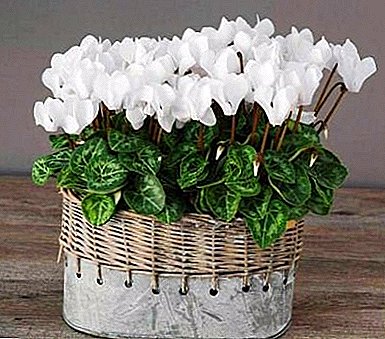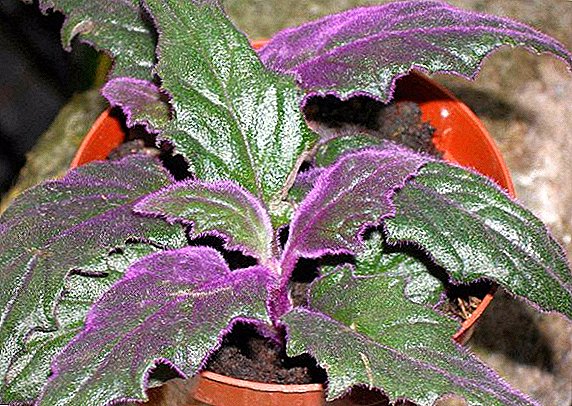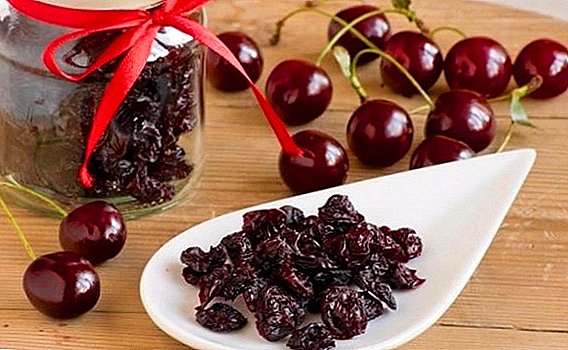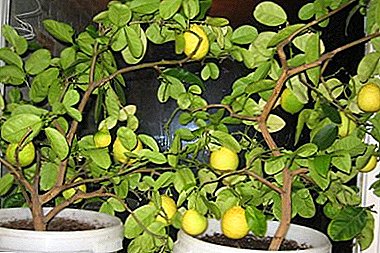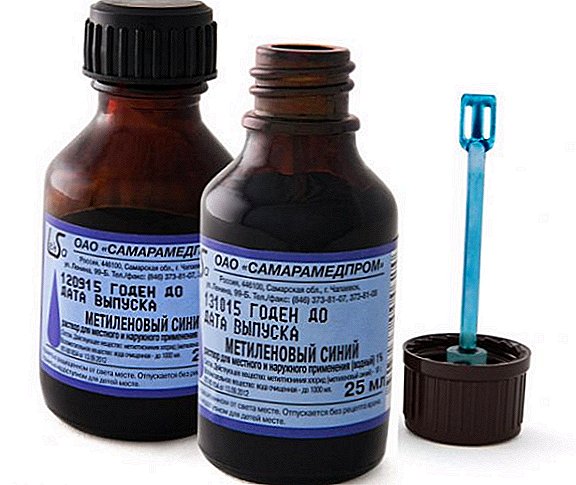 Poultry is often affected by various fungal and bacterial diseases, which entails both the incidence of livestock and considerable financial costs for medicines. In this article we will consider a budget medicine for the treatment of chickens, we will talk about what a methylene blue is, how it works and what it is used for.
Poultry is often affected by various fungal and bacterial diseases, which entails both the incidence of livestock and considerable financial costs for medicines. In this article we will consider a budget medicine for the treatment of chickens, we will talk about what a methylene blue is, how it works and what it is used for.
Composition, release form, packaging
The composition of the drug includes only the active substance - methylene blue, which is presented in the form of crystalline granules (powder) blue. This drug is sold in any pharmacy. It is released without a prescription.
Important! Prohibited oral use of the alcohol version of the drug.
There are the following forms of release: 1% aqueous solution in vials of 25 and 50 ml and ampoules, alcohol solution of 10 ml, as well as dry powder. 
Biological properties
The blue substance destroys pathogens by disinfecting the surface on which it is applied. In case of internal administration, it has a negative effect on the pathogenic flora in the gastrointestinal tract, therefore, it is used for poisoning. Also able to quench mild pain.
Consider the most common diseases of chickens and chickens, as well as methods for their treatment.
Methylene blue can be compared with a brilliant green, but the system of action itself is different. Since this substance is poorly soluble in water and alcohol, after ingestion of the bacterium "blue" causes cell dysfunction, which causes the body to die. In this case, the substance is quickly removed from the tissues of the animal, thus avoiding a negative reaction.
What helps chickens
- Disinfection and cauterization of wounds, burns, and eczema.
- Tissue treatment for urinary infections.
- As an analgesic.
- In the treatment of food poisoning.
- Treatment of fungal and bacterial diseases.

How to use methylene blue for chickens
- Treatment of damaged skin. For these purposes, 1-3% alcoholic liquor is used, which not only disinfects, but burns the wound. In the case of burns, use a 1% aqueous solution.
- Diseases of the urinary tract of an infectious nature. It is necessary to wash the inflamed canals with a 0.02% solution (2 g of dry powder are taken for 100 ml of water). The procedure is repeated until the condition of the bird improves.
- Infectious diseases of the stomach or intestines. In this case, the chicken should consume a solution of "blue", so it is important that doses are observed. In 5 l of water, 1 g of methylene blue powder is diluted, after which the bird is sealed. The treatment is carried out until complete recovery.
- Severe poisoning with poisons or other chemicals. A 1% pharmaceutical aqueous solution of the drug with glucose is used, the usual aqueous solution is not suitable for these purposes. Intravenous chicken injected with 0.2 ml of the drug per kilogram of weight. In case of severe poisoning, the dose is increased to 0.5 ml.

Contraindications and side effects
The drug can cause allergic rashes on the skin, even if the dosage is observed. In contact with the mucous membranes of a concentrated or alcohol solution, irritation of various strengths occurs. In case of overdose, diarrhea or vomiting occurs. Also note that methylene blue lowers blood hemoglobin levels, which can trigger anemia.
Read how to treat diarrhea in chickens.
Shelf life and storage conditions
The preparation in the form of a powder has no shelf life under the storage conditions. Aqueous and alcoholic solutions are suitable for 3 years from the date of issue. After the first opening of the specified period is not reduced.  Store tightly closed containers with powder or solution should be at low humidity and temperature + 15 ... +25 ° С.
Store tightly closed containers with powder or solution should be at low humidity and temperature + 15 ... +25 ° С.
Poultry farmers should find out why chickens are rushing badly, why chickens are falling, balding, pecking eggs and each other until the blood.
Blueprint is an excellent budget tool for the treatment of not only birds, but also other pets, as well as humans. Do not forget that the substance is a dye, and it is difficult to remove it from some surfaces.



